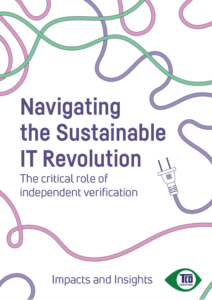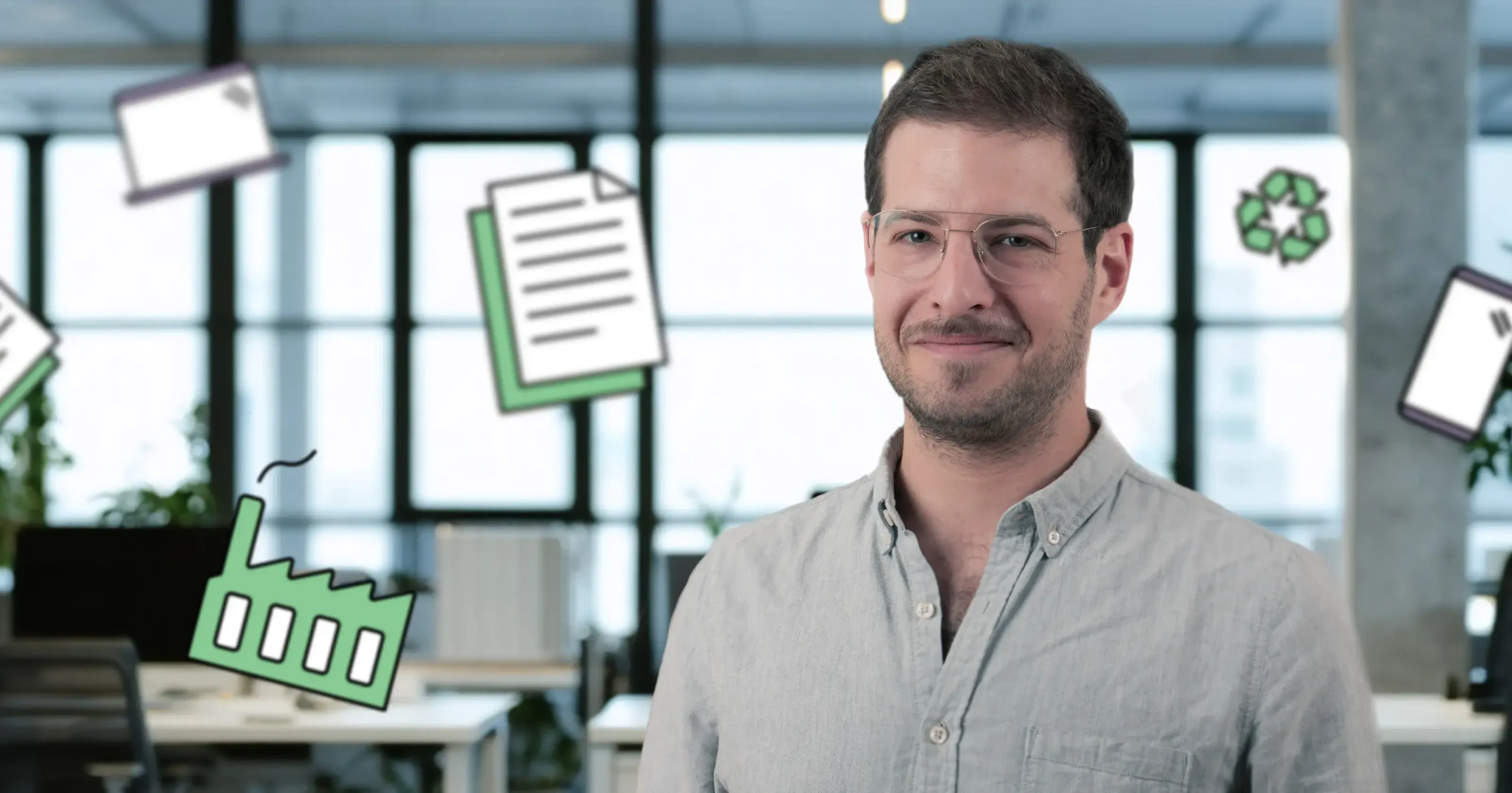Ecolabels give purchasers an easy way to include sustainability factors in a wide variety of product categories. But many purchasers point to the overload of choice. Comparing ecolabels can be confusing. There are, however, some basic ways to assess which ones actually deliver credible, verified results.
Balancing the many priorities in IT procurement is a challenge. To get the sustainability factors right, it’s far too resource-intensive to set your own criteria, pay for independent verification of compliance, and make sure that products and factories live up to the criteria and show progress over time. This is the job of a comprehensive product certification or ecolabel. Therefore, best practice in sustainable procurement starts with choosing the right tool.
“Prioritizing certifications that address multiple sustainability issues throughout the product life cycle is integral in advancing sustainability through IT”
Jonathan Rivin Materials Evaluation Specialist,
Oregon Department of Environmental Quality
Jonathan Rivin, Materials Evaluation Specialist at the Oregon Department of Environmental Quality, explains the importance of sustainability certifications for the State of Oregon.
“Using multi-attribute sustainability certifications is an important strategy for us to manage risk and drive sustainability. Not only along the supply chain, but also downstream to usage and end-of- life,” he says.
But comparing ecolabels can be confusing. There are literally hundreds that claim to assess environmental and worker impact. But what makes an ecolabel or sustainability certification the “right” one?
What are the factors you must look for to ensure you can stand behind using an ecolabel?
Ecolabels with up-to-date criteria, mandatory independent verification, and a system of accountability do all the heavy lifting – so purchasers don’t have to. Compared to relying on unverified manufacturer claims, this rigor significantly reduces many risks when specified in purchasing contracts. The most robust ecolabels or certifications ensure proven sustainability progress and continuous criteria compliance for the entire life of the certificate granted.
Three key questions to ask before choosing an ecolabel to ensure it has the intended effect:
- Does it include up-to-date environmental and social sustainability criteria?
- Does it include mandatory independent verification of compliance and proof for the purchaser?
- Does it include a system of industry accountability and consequences?
Up-to-date criteria
One way ecolabels vary is in criteria scope. A criteria set can cover everything from a single issue, such as energy consumption, to a comprehensive set of sustainability factors: environmental, social, and economic. Some ecolabels and certifications use optional criteria to pick and choose from, while some use mandatory criteria.
Another factor is the interval for criteria updates. IT is a fast moving category, so it’s critical that the sustainability criteria included are revised frequently to keep pace with technology and emerging sustainability hot spots.
The bottom line for purchasers is that a credible sustainability approach requires that you address a number of these risks in combination. For example, measuring energy efficiency is a good start, but a sustainable approach must go broader, and include a variety of environmental aspects as well as social responsibility in the supply chain.
- Environmental responsibility: reduced impact from manufacturing and use
- Social responsibility: safer working environments and fair treatment
- Product attributes: longer life, repairability, energy consumption, usability
Also, look for an independent, scientifically based process for setting and updating criteria. Consensus-based and industry-owned initiatives have been known to lower the ambition levels of criteria used and can also allow for misleading criteria, loopholes and industry minimum levels that everyone can pass. Criteria should be tough and continuously revised through an evidence-based process, in order to drive meaningful change in the IT industry. For multinational purchasers, it is also important that the same criteria apply globally.
Mandatory independent verification
There is a common misconception that most established ecolabels include mandatory independent verification of criteria compliance. This is not the case. The existence and rigor of verification vary widely among ecolabels — from mandatory independent verification, to self declarations and claims. Making an informed choice is critical for purchasers putting their trust in any label and requires some due diligence as part of the decision.
Best practice is mandatory independent verification of all criteria for each product, final assembly factory and brand owner – before and after a product is certified. With no exceptions. This complex and costly scrutiny closes loopholes, helps protect workers, and forces the industry to make improvements. This is the way to avoid greenwash and bluewash.
Independent verification is hard work, and with some ecolabels it’s just not included. Or, it’s optional for some criteria. The reasons for excluding verification vary — the organization behind the ecolabel may not have the specialist knowledge and industry access required to do the verification work, and relies on the ability of brands to register compliance themselves. However, while self declaration systems are fast and cheap to implement, and may even include relevant criteria, they are not credible. Many self-declaring systems allow brand owners to list their products and factories as sustainable without having an independent party verify these claims. Too often, purchasers are expected to rely on these systems, without knowing how sustainable the products actually are.
A system such as this is of course favorable to industry, but the lack of verification and transparency leaves the purchaser in the dark. Purchasers are left on their own to judge the value of the claims connected to product performance and factory conditions. Ask yourself – does a product self declaration actually give you any information on what has been verified?
Procurements relying on self declaration ecolabels face a higher risk of greenwashing or bluewashing. Claims could be true and valid, but how can you know? Unless the purchaser hires someone to audit all the factories and test the products themselves, there simply is no proof.
In our factory verification rounds we repeatedly uncover false claims around working conditions that would go unnoticed under self declaration systems. Some examples are excessive working hours, incorrect remuneration, and lack of worker representation, to name a few. If factories are not monitored on a regular basis, even purchasers with the best of intentions risk buying devices made in facilities where labor law violations are standard practice. Without the signature of an independent verification organization proving that claims are accurate, there is just no way of knowing.
Simply put, ecolabels that do not independently verify product claims are not good enough for purchasers seeking to mitigate risks of contributing to harmful working conditions and negative environmental impacts.
Industry accountability and consequences for non-compliance
Increasingly, procurement teams want to see that the products they purchase meet all criteria for the entire duration of a contract. For this to happen, the ecolabel must include a robust system of industry accountability and consequences to handle found non-compliances. Instead of just labelling a product at a single point in time, the process should be systematic and include a long-term commitment to continuous improvement that also includes verification. Otherwise, there is a large risk that non-compliances are found but not corrected, or that problems are only temporarily solved, and that bad practices return. A long-term commitment for brand owners and factories is needed to ensure continued progress. Still, many ecolabels do not include systems for follow-up and industry accountability.
“The EU GPP encourages the demonstration of specific criteria fulfillment by the use of Type 1 Ecolabels as it ensures independent verification of the declared environmental performance”
Felice Alfieri Policy Officer at the European Commission
With the right ecolabel, purchasers get a reliable tool for driving the industry toward a sustainable practice – with fair labor conditions, low emissions, and safe chemicals.
It is common that factory conditions do not fully comply with all code of conduct and labor criteria in a first audit. Overtime could be exceeded, or emergency lighting and exit signs could be missing. What matters is that the ecolabel follows up to ensure that identified non-conformities at factories are corrected, even minor ones. Factory management must have a commitment to systematically identify and address social issues.
Factory conditions can change from one day to the next, so purchasers cannot blindly trust factories to correct non-conformities without clear corrective action plans and follow-up. If issues are revealed and not corrected on time, the ecolabel or certificate must include a system of clear consequences. These consequences could include remediation and ultimately a withdrawal of the certificate.





